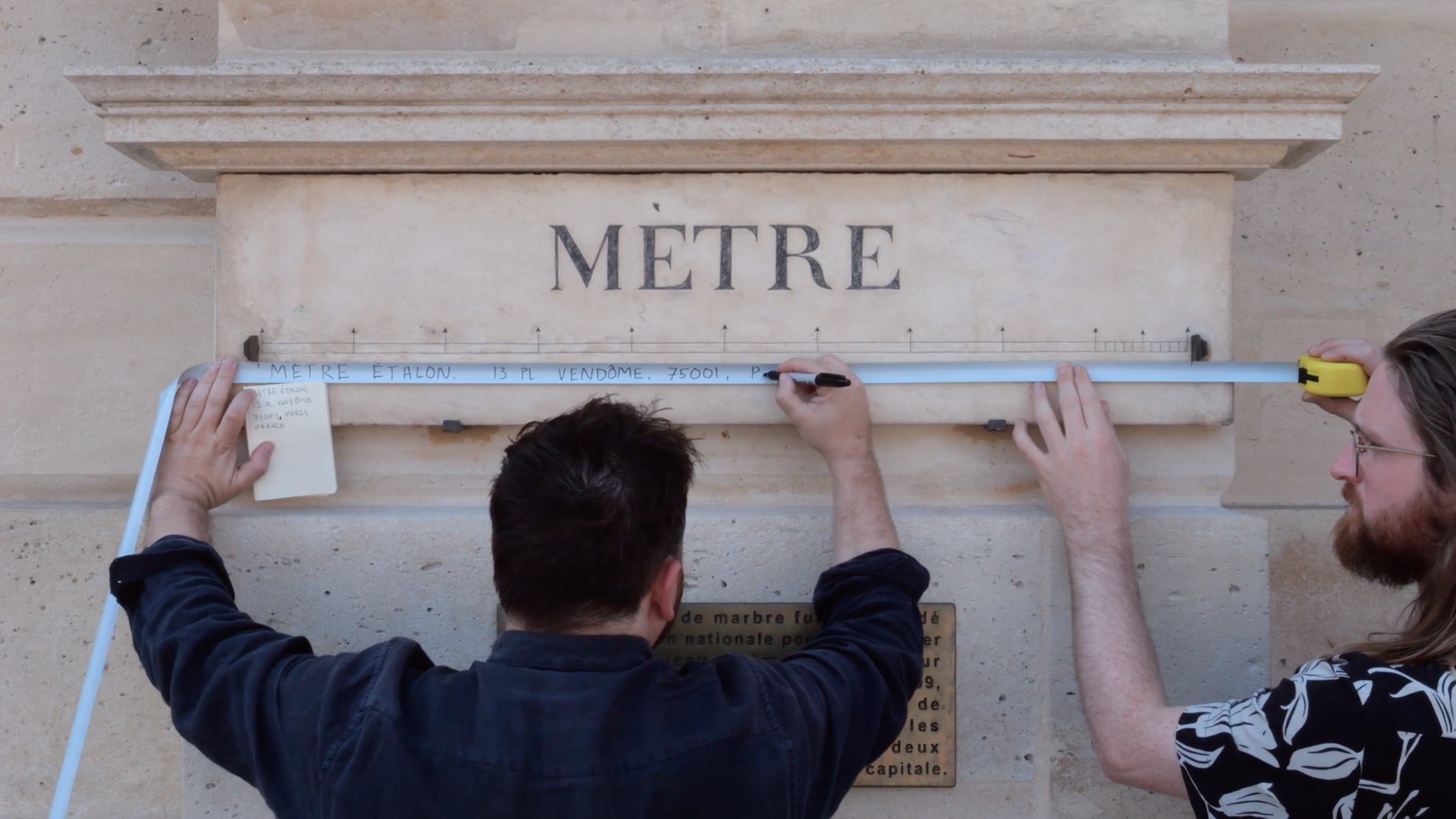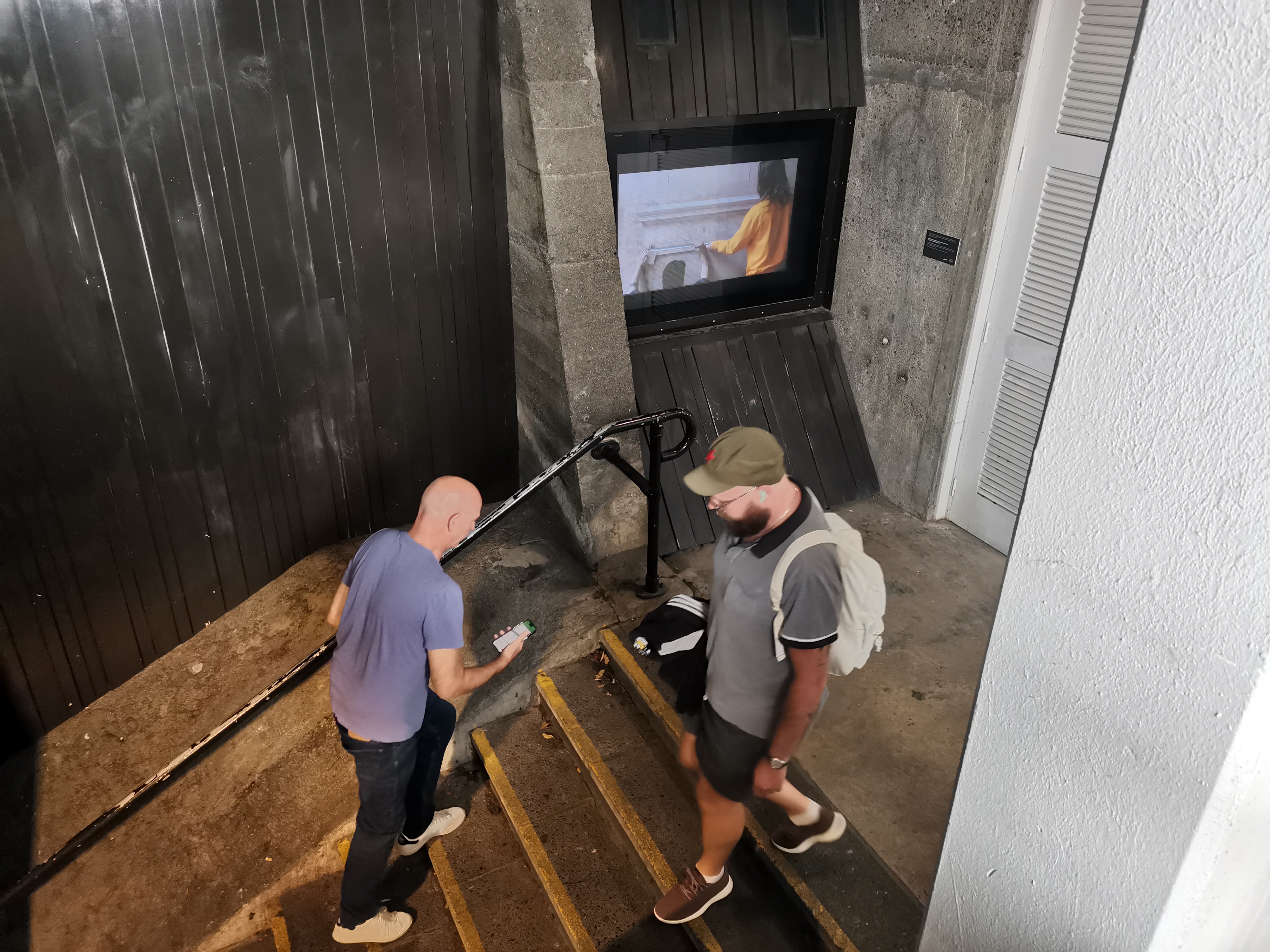The Observatory Project: Non-Standard Measures
2024
Masons Screen
30th Jan – 11th March 2024
In Non-standard Measures, members of The Observatory Project use blank tape measures to mark out metric and imperial units of length. In 2023 we visited public standard measures installed in Paris and London in the 18th century. Marking out by hand our own metres, yards, feet, and inches onto blank tape measures, we playfully push against notions of accuracy and standardisation – putting the metre to measure. Recording the street address of the public standard onto the tape, our measurements speak to local systems of measurement rather than any global standard.
The last original standard metre (Metre Étalon) was erected in 1791 in Paris to promote the new definition of the metre as one ten-millionth of an arc from the north pole to the equator (passing through the Paris Meridian). This represented a cultural shift in France from imperial measures decreed by the king to a new system of measurement borne of the Earth itself. During this time, 16 marble shelves were placed in public spaces around Paris to help introduce the concept of the metre to the public. Our project draws on the availability of these standards to the public, who used these objects to cut their own metres to take back into their shops and homes. These shelves were made to hold a single prototype metre bar perfectly, and this bar was used as an international reference until 1960. Today, Metre Etálon is a somewhat hidden marble shelf tucked behind the Jardin du Luxemburg wall. Not so hidden (although equally as ignored by passing tourists) is a nearby replica, a strange cousin made in the 1800s installed higher on a wall next to the Ritz in Pl Vendôme – a high-end shopping quarter.

In London, outside Greenwich Observatory is the Imperial Standard Measures, which follows a similar formula, allowing a prototype yard, foot, and inch to rest in the defined space. These measures are based on the body (whose body?) as opposed to the metre, which is based on the Earth. Before standardisation, many villages had a local foot, yard, and inch that differed slightly from those installed in Greenwich. When re-measuring the yard in preparation for this work (912cm), an elderly man nearby proclaimed, “Oh, you of little faith!” A condition of the Prime Meridian being established in Greenwich in 1884 (instead of Paris) was that the UK adopted the metre and metric system. This shift wouldn’t happen until 1960, and imperial measures are still used in many aspects of life in the UK.
Translating these measures into drawings on blank tape measures highlights the absurdity of these now “international standards” and their highly local beginnings. We are interested in how performing the act of making a measurement requires a specific kind of being present and can open up space for uncertainty and the traces of a hand amongst otherwise rigid and rational standards of measurement.

This project was commisioned by CIRCUIT for the Masons Screen, 2024.
© Copyright Ziggy Lever